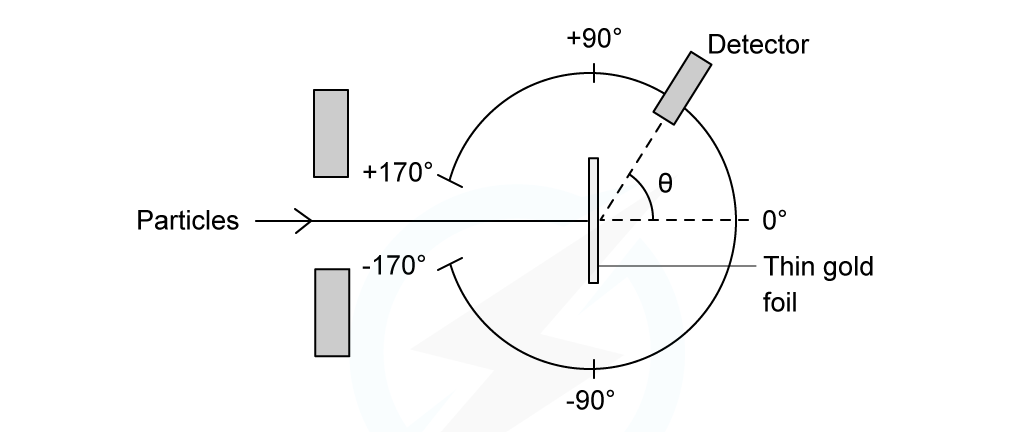Alpha-particle Scattering Experiment (Cambridge (CIE) AS Physics) : Revision Note
Alpha-particle scattering experiment
Evidence for the structure of the atom was discovered by Ernest Rutherford in the beginning of the 20th century from the study of α-particle scattering
The experimental setup consists of alpha particles fired at thin gold foil and a detector on the other side to detect how many particles deflected at different angles
Alpha particle scattering experiment

α-particles are fired at a thin gold foil and a detector records the deflection of the particles
α-particles are the nucleus of a helium atom and are positively charged
Deflection patterns of the alpha particles

When α-particles are fired at thin gold foil, most of them go straight through but a small number bounce straight back
From this experiment, Rutherford results were:
The majority of α-particles went straight through
This is shown by process A in the image above
This suggested the atom is mainly empty space
Some α-particles deflected through small angles of < 10o
This is shown by process B in the image above
This suggested there is a positive nucleus at the centre (since two positive charges would repel)
Only a small number of α-particles deflected straight back at angles of > 90o
This is shown by process C in the image above
This suggested the nucleus is extremely small and this is where the mass and charge of the atom is concentrated
It was therefore concluded that atoms consist of small dense positively charged nuclei, surrounded by negatively charged electrons
Structure of an atom as determined by the alpha particle experiment

An atom: a small positive nucleus, surrounded by negative electrons
(Note: The atom is around 100,000 times larger than the nucleus!)
Worked Example
In an α-particle scattering experiment, a student set up the apparatus below to determine the number n of α-particle incident per unit time on a detector held at various angles θ.

Which of the following graphs best represents the variation of n with θ from 0 to 90°?

Answer: A
The Rutherford scattering experience directed parallel beams of α-particles at gold foil
The observations were:
Most of the α-particles went straight through the foil
The largest value of n will therefore be at small angles
Some of the α-particles were deflected through small angles
n drops quickly with increasing angle of deflection θ
These observations fit with graph A

You've read 0 of your 5 free revision notes this week
Unlock more, it's free!
Did this page help you?
